Mount Whitney is the tallest mountain in California and the highest peak in the contiguous United States, standing at an elevation of 14,505 feet (4,421 meters). It is located on the eastern edge of the Sierra Nevada range and offers breathtaking views of both Sequoia National Park to its west and Inyo National Forest to its east. While it is a popular hiking destination for outdoor enthusiasts from around the world, Mount Whitney poses a significant challenge due to its steep terrain and high altitude.

The tallest mountain in California is Mount Whitney at 14,505 feet high.
©iStock.com/dpenn
Despite these challenges, numerous animals live on California’s tallest mountain. Among them are seven unique species that thrive on this majestic summit. Each of these species has adapted to survive in this harsh environment by developing specialized skills such as climbing rugged slopes or hibernating through long winters.
Visitors can witness these fascinating creatures throughout their climb up Mount Whitney’s trails while taking care not to disturb their natural habitats. As you trek towards Mt. Whitney’s summit, you will be amazed by all that nature has bestowed upon this towering giant. Let’s learn more about the animals on California’s tallest mountain!
Animals on Mount Whitney
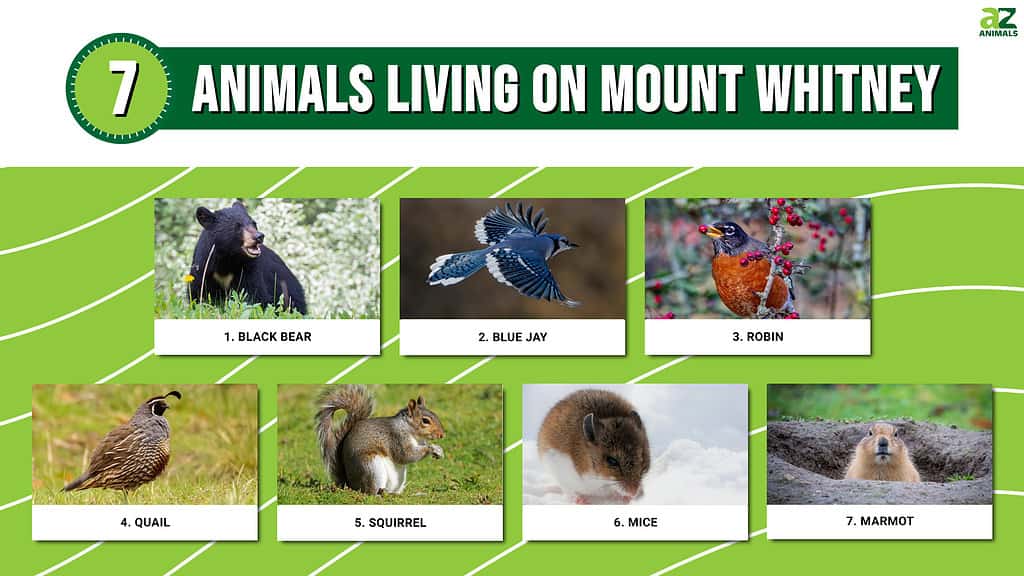
1. Black Bear

There are black bears living on Mt. Whitney in California.
©Ghost Bear/Shutterstock.com
A black bear is a species of bear native to North America. It is certainly one of the largest animals on California’s tallest mountain. They are typically smaller than their grizzly counterparts, weighing between 200 and 600 pounds with an average height of around 3 feet at the shoulder. Their fur ranges from black to brown and can have a glossy sheen in the sunlight.
Black bears are opportunistic omnivores, meaning they will eat both plants and animals depending on what is available. Some common food sources include berries, nuts, roots, insects, fish, small mammals, and carrion. They have also been known to raid campsites or garbage cans for human food.
In terms of habitat, black bears can be found in a variety of environments ranging from forests to mountains to swamps. In California specifically, they are often found in the Sierra Nevada mountain range, which includes Mount Whitney — the tallest mountain in the state. These bears may use different areas for different parts of their life cycle, such as using forested areas for cover during hibernation or open meadows during mating season.
2. Blue Jay
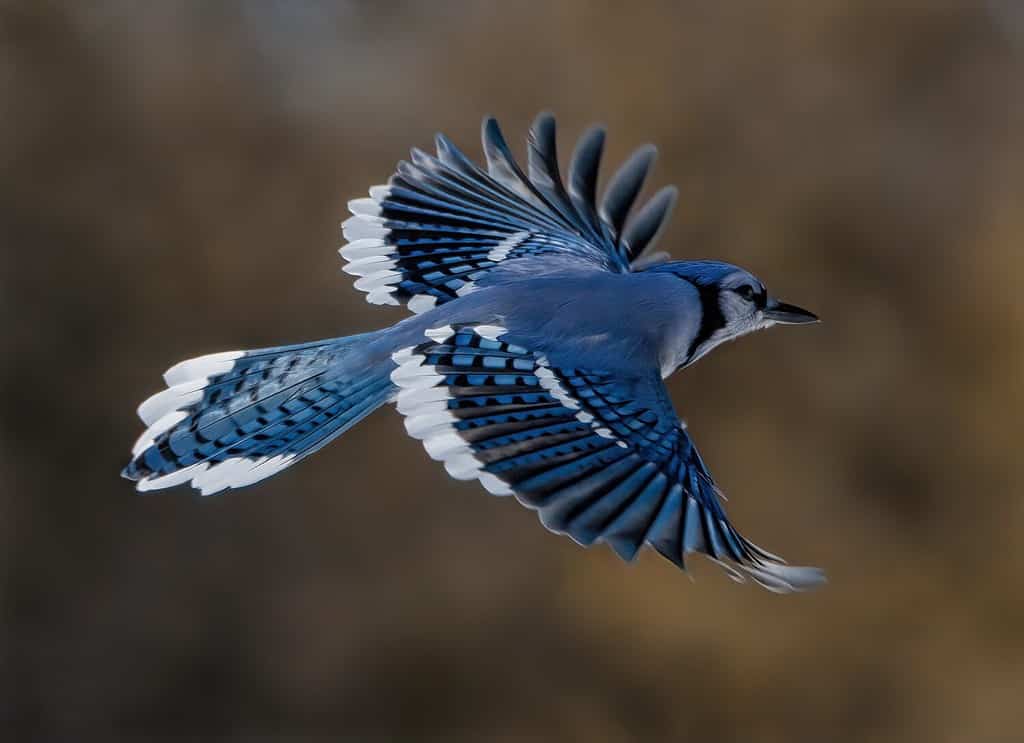
California has beautiful blue jays living atop its highest mountain.
©Fiona M. Donnelly/Shutterstock.com
The blue jay is a bird species commonly found in North America, including on California’s tallest mountain. These birds are easily recognizable by their vibrant blue and white feathers, with black accents on their wings and tail. Blue jays have a distinctive crest of feathers atop their head that they can raise or lower depending on their mood.
In terms of diet, these birds are omnivorous and will eat just about anything they can find. This includes nuts, seeds, fruits, insects, small animals like frogs or lizards, and even other bird eggs. They are known for being opportunistic feeders who will take advantage of any food source available to them.
When it comes to habitat preferences, blue jays tend to thrive in wooded areas with plenty of trees for nesting and hiding from predators. They also prefer suburban neighborhoods where there may be backyard bird feeders or gardens full of fruiting plants.
Overall, the blue jay is a fascinating creature that is often admired for its beauty and intelligence. If you ever spot one while hiking through California’s mountainside trails, make sure to take note of this stunning bird!
3. Robin
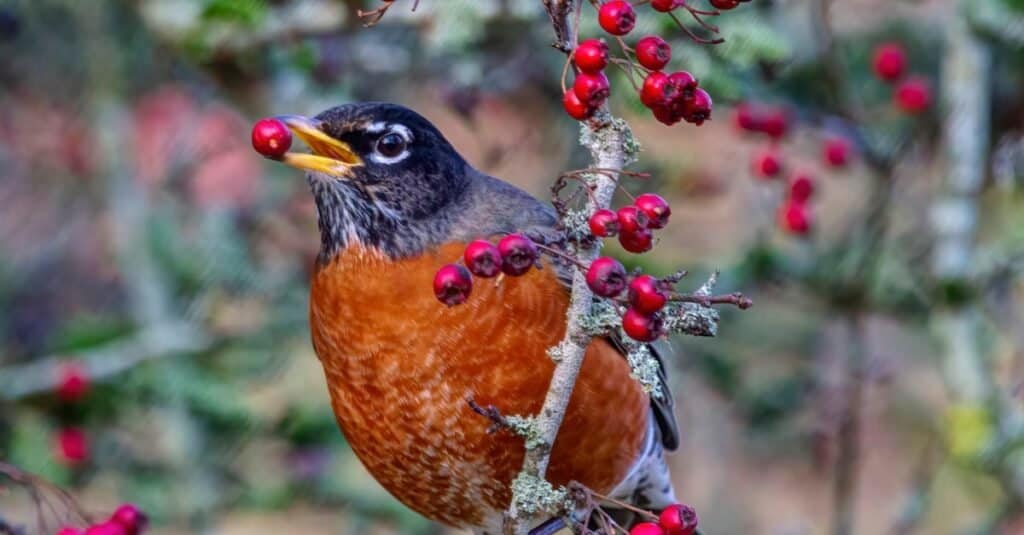
During winter months, when food is scarce, robins feed on fruits such as holly berries.
©JamesChen/Shutterstock.com
The robin is a medium-sized bird that belongs to the thrush family. They are easily recognized by their distinctive red-orange breast and white belly, which contrasts sharply with their dark gray-brown back and wings. The males are slightly larger than the females, but both sexes have similar plumage.
Robins can be found throughout North America, Europe, and Asia in a variety of habitats, including woodlands, gardens, parks, and suburban areas. They prefer open spaces with short grass or bare ground where they can forage for insects such as earthworms, beetles, caterpillars, and spiders. During winter months, when food is scarce, they feed on fruits such as holly berries.
In terms of breeding habits, robins typically mate for life and build cup-shaped nests out of twigs lined with soft materials like grasses or animal hair. These nests are usually located in trees or shrubs near open fields or meadows where insects are abundant.
Overall the robin is an adaptable species that has successfully colonized diverse environments across the globe thanks to its varied diet preferences and nesting habitat flexibility.
4. Quail

Quails have distinctive coloring patterns on their feathers that help them blend into their natural habitats.
©iStock.com/Banu R
A quail is a small, ground-dwelling bird that belongs to the family of Phasianidae. Their appearance can vary depending on the species, but they are generally plump with short legs and wings. Quails have distinctive coloring patterns on their feathers that help them blend into their natural habitats. For example, California quails have a black head with a white stripe above their eyes and brown feathers covering most of their body.
In terms of diet, quails are omnivores. They feed on plant material like seeds and insects or small animals such as snails and worms. They usually forage in groups during the day, which helps them stay safe from predators.
Quail habitats also vary based on the species. Some prefer open grasslands, while others prefer scrubby deserts or forests with dense vegetation cover. In general, though, quail need access to food sources and shelter from potential threats like birds of prey.
Overall, there are several different types of quail found throughout California’s mountains (and beyond!), each with unique physical features and preferences for habitat and diet.
5. Squirrel
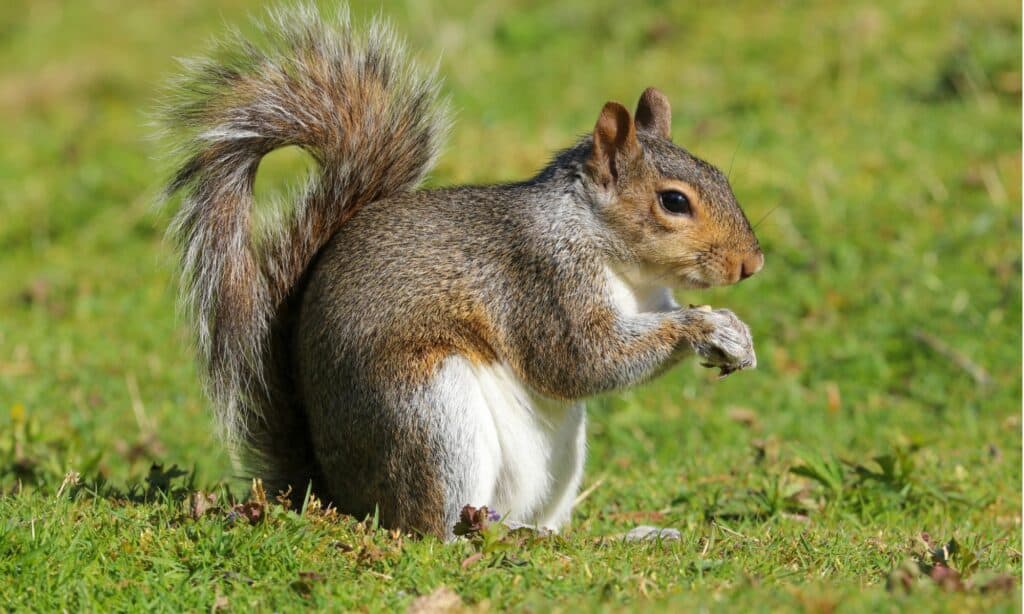
Eastern Gray Squirrels are one of several types of squirrels living in California.
©iStock.com/Helen Davies
Squirrels are small, bushy-tailed rodents that are found in a variety of habitats throughout the world. These animals are very adapted to living on California’s tallest mountain. They typically have soft, dense fur that is either gray or brown, depending on the species. Their tails are long and bushy, which helps them maintain balance while jumping from tree to tree. Squirrels have large eyes and whiskers, which aid them in navigating their surroundings.
In terms of diet, squirrels are omnivores but primarily feed on nuts, seeds, fruits, and insects. Some species also eat bird eggs or other small animals when food sources become scarce.
As for habitat, squirrels can be found in many different environments, including forests, urban areas with trees, or parks where they can climb and nest safely. Different squirrel species prefer different types of trees for nesting, such as oak or pine trees.
Overall, squirrels play an important role within ecosystems by dispersing seeds from plants they consume, making them essential seed distributors to ensure plant diversity flourishes across different environments.
6. Mice
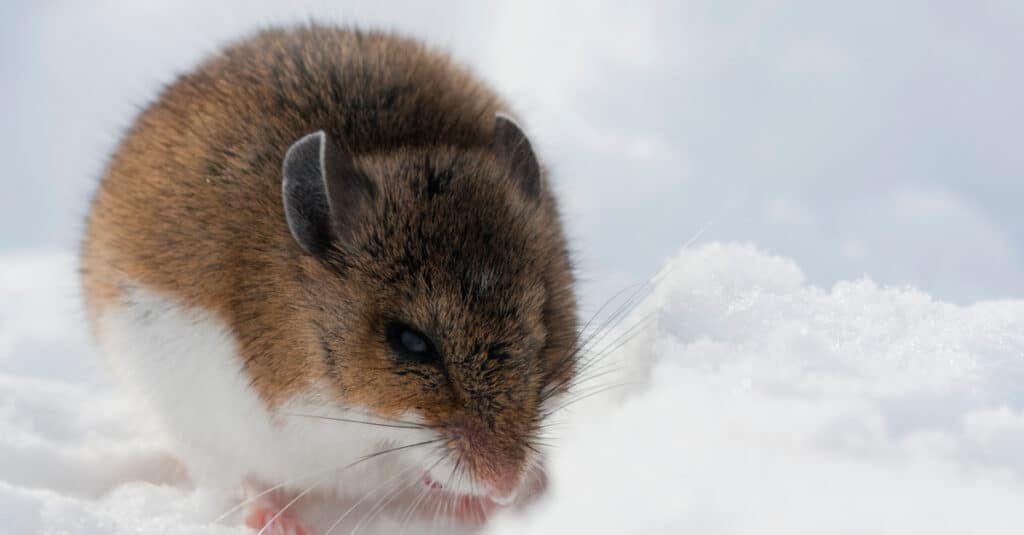
California has several types of mice, including deer mice.
©Danita Delimont/Shutterstock.com
The sixth animal found on California’s tallest mountain is the humble mouse. Mice are small, rodent-like creatures that belong to the family Muridae. They are characterized by their rounded ears, pointed snouts, and long tails. Their size can vary depending on the species, with some being as small as 2-3 inches in length and others growing up to 12 inches long.
In terms of diet, mice are omnivores and will eat almost anything they can find. This includes seeds, nuts, fruits, insects, and even other small animals like insects or worms. Mice have a high metabolism rate which means they need to eat frequently throughout the day.
Mice can be found in a variety of habitats, including forests, grasslands, deserts, and even urban areas. They build nests from materials such as leaves or grasses, where they rest during the daytime hours.
Despite their reputation for being pests in homes and gardens due to their tendency to chew through wires or gnaw on food containers, mice actually play an important role in many ecosystems. As prey for larger predators like hawks or owls, mice help keep these predator populations healthy while also contributing nutrients back into the soil through decomposition after death.
Overall it is clear that despite their diminutive size, mice remain one of the most fascinating creatures atop California’s tallest mountain!
7. Marmot

Marmots’ burrows serve as shelters during harsh weather conditions and safe havens for raising young.
©iStock.com/undefined undefined
Marmots are a type of large ground squirrel that can be found in various parts of the world, including California’s tallest mountain. These animals have a distinctive appearance with round bodies, short legs, and bushy tails. They typically range from 18 to 28 inches in length and weigh anywhere from 4 to 11 pounds.
In terms of diet, marmots are herbivores that primarily eat grasses, leaves, flowers, and other plant materials. Marmots are one of the animals found all over California’s tallest mountain. They are notorious for gnawing through tents, so be aware of this if you plan to camp out.
As for their habitat, marmots prefer living on rocky slopes or meadows at high elevations, where they can retreat into underground burrows for protection against predators such as eagles and coyotes. These burrows serve as both shelters during harsh weather conditions and safe havens for raising young.
Overall, the marmot is an interesting animal with unique characteristics that make it well-suited to surviving in California’s rugged mountain environment.
Summary of 7 Animals Found on California’s Tallest Mountain
Here’s a recap of the seven animals we looked at that live on Mount Whitney.
| Number | Animal | Habitat | Diet |
|---|---|---|---|
| 1 | Black Bear | Forests, mountains, swamps | Berries, nuts, roots, insects, fish, small mammals, and carrion |
| 2 | Blue Jay | Wooded areas, suburban neighborhoods | Nuts, seeds, fruits, insects, small animals such as frogs or lizards, and other bird eggs |
| 3 | Robin | Woodlands, gardens, parks, suburban areas | Insects such as earthworms, beetles, caterpillars, and spiders; eat holly berries in winter |
| 4 | Quail | Habitats vary based on the species: some prefer open grasslands, others prefer scrubby deserts or forests | Plant material such as seeds; insects or small animals including snails and worms |
| 5 | Squirrel | Forests, urban areas with trees, parks | Nuts, seeds, fruits, and insects; some species eat bird eggs or other small animals |
| 6 | Mice | Forests, grasslands, deserts, urban areas | Seeds, nuts, fruits, insects, and other small animals such as insects or worms |
| 7 | Marmot | Rocky slopes or meadows at high elevations, where they can retreat into underground burrows | Grasses, leaves, flowers, and other plant materials |
The photo featured at the top of this post is © nyker/Shutterstock.com
Thank you for reading! Have some feedback for us? Contact the AZ Animals editorial team.







